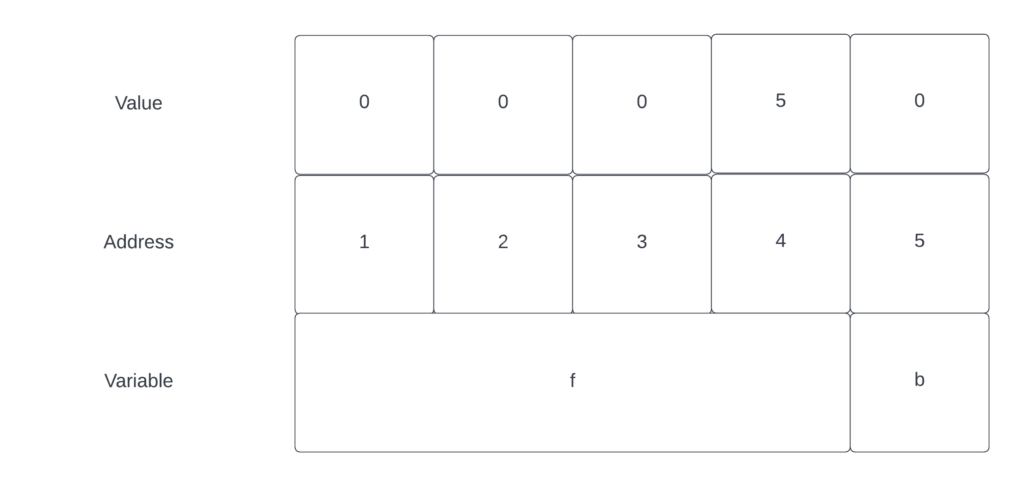
Go Pointers, scary or not? If you are new to Go, and you are confused as to what an * is in front of a variable or the & in front of a variable are? You have come to the right place. Let us run through this oddity for those that have not programmed in C or C++.
What is the Point…er in Go?
A pointer is, a variable that points to the location in memory of where a value is stored.
var f int32 = 2
var b bool = false
In programming, every variable is stored in a memory address. Different types of variables can take up different amounts of memory. In the provided example, we have two variable, one of type int32 which takes 4 bytes and the other Boolean which only takes 1. Variable f starts at address location 1 and variable b starts a address 5.

A pointer can reference the location of variable that is of any type. A pointer also has a fixed size regardless of the size of the typed being pointed at. Pointers enable a lot of cool things when used correctly. Let us go in depth.
The & is the address operator. This value is used in front of the variable and it returns the address of the memory location.
The * is the indirection operator. This value goes in front of the variable that is of pointer type and returns the pointed-to value.
foo := 2
pointerFoo := &foo
sum := 2 + *pointerFoo
fmt.Println(sum) // prints out 7Click here and play around on the Go playground.
How to use?
The downside of dereferencing is if you do this on a non-nil pointer, the system will panic and you will have to recover from this state.
The pointer then becomes its own type of pointer type. It is prefixed with a * before a type name. A pointer type can be based on any valid type. On a side note, when using the new operator this in turn will create a pointer variable. The new pointer variable will return a zero value instance of the provided type.
var i = new(int) // returns 0
var s = new(string) // returns ""
var b = new(boolean) // returns false
etc...The new function is rarely used. For structs, use an & before a struct literal to create a pointer instance. You can’t do this on primitive literals such as numbers, Booleans and strings. The reason for this is that they don’t have a memory address; they exit only at compile time.
foo := &Foo{}
var s string
stringPointer := &sI hope you have a better understanding of what a Go pointer is, and you don’t find it scary or intimidating when coding in Go and you stumble upon this. Go Pointers, scary or not? We can assert they are not scary and provide great flexibility in our program. For more tutorials, just follow the link